Immigrant Farmers: The Himmelsteins
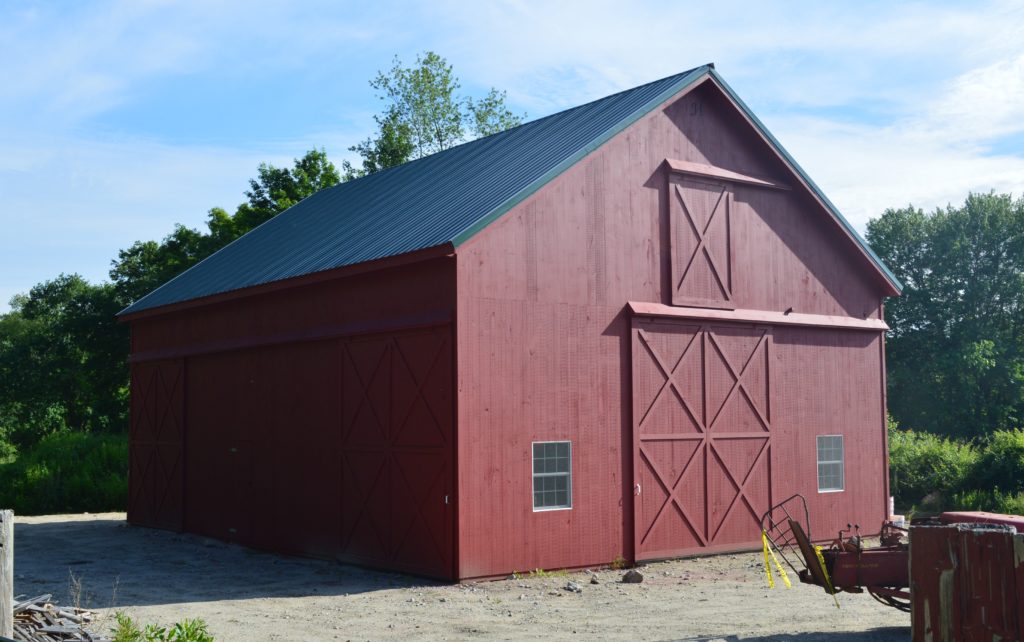
Himmelstein Barn, built 2014, Himmelstein Homestead Farm, Lebanon, Connecticut. Photo: Mary Donohue, 2016
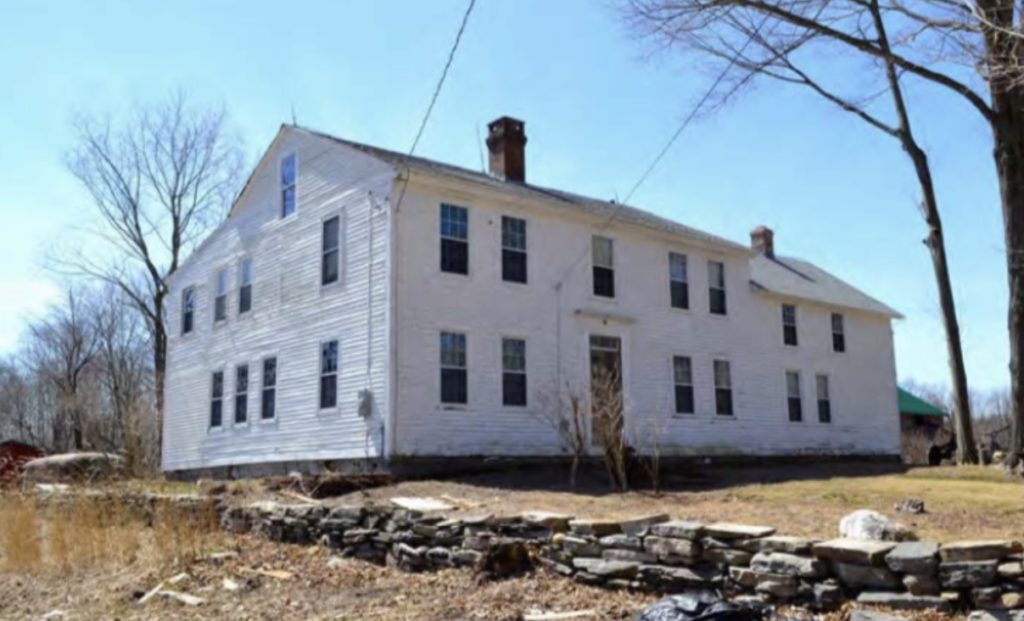
Farmhouse at the Himmelstein Homestead Farm, Lebanon, Connecticut. It was built around 1821. This is how it looked in 2013. Photo: Lucas Karmazinas, State Register of Historic Places
The Himmelstein Homestead Farm is in Lebanon, Connecticut. Lebanon has a long history of farming.
Beginning in the late 1700s, though, farmers began to leave Connecticut. Connecticut’s farmland was all taken. As children grew up, there wasn’t farmland for them to have their own farm. People moved west to places like Ohio. Some moved north to Vermont. Some left farming. They moved to cities or small towns. They took jobs in factories.
But in the 1880s, new immigrants began to buy Connecticut farms. People from Poland, Italy, Finland, and Jews from Eastern Europe came to Connecticut. They became farmers.
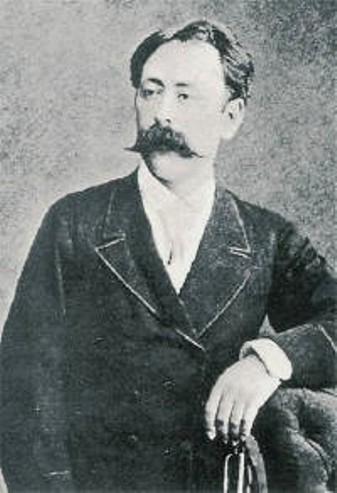
The Baron de Hirsch (1831-1896) used his fortune to help Jewish people move to the United States and become farmers. Photo: Jewish Historical Society of Greater Hartford
Jews Move to Connecticut to Become Farmers
There was an organization to help Jewish immigrants become farmers. It was called the Jewish Agricultural Society. The Jewish immigrants had gotten help getting to America from Baron de Hirsch. Many Eastern European Jews were escaping violence in their homeland. Baron de Hirsch was a wealthy German man. He was Jewish, too, and he wanted to help.
The Jewish immigrants came to New York City. There, the Jewish Agricultural Society helped them find farms. The society loaned them money to buy the farms. The society gave the new farmers advice about how to run a farm. It published a farming magazine in the Yiddish and English languages. Yiddish is the language these Jews spoke. The magazine taught the new farmers how to manage a farm and make enough money to support their families.
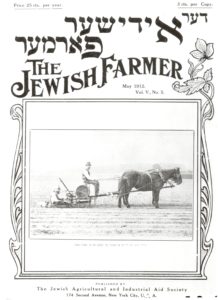
The Jewish Farmer, May 1912. Photo: Jewish Agricultural and Industrial Aid Society, New York, New York. This is the magazine that helped Jewish farmers learn how to farm. Can you see the English words on the cover? Can you also see the Yiddish words written in a different alphabet?
They had a lot to learn! They had to learn a new language. They had to learn how to take care of animals like chickens and cows. They learned how to sell their eggs and milk. Farming is a lot of hard work! There are things to do every day. They also had to learn a new culture, new foods, and a new style of clothing.
Louis Himmelstein’s family moved from Russia to New York City in 1900. He was 18 years old. The family moved to a farm in Lebanon, Connecticut in 1903. Louis loved farming. He became a farmer.
In 1913 Louis and his wife Dora Himmelstein bought their own farm in Lebanon. The Jewish Agricultural Society helped them purchase their farm. The farm had 125 acres of land, one cow, and a flock of chickens. The Himmelsteins worked hard. They bought more land and more cows. They ran a dairy farm. A dairy farm produces milk. After a while they had more than 300 acres and 100 cows.
The Himmelsteins had four children. When the children grew up, three of them stayed on the farm. Their son Meyer was a farmer. Meyer’s son Frank also grew up to be a farmer. Three generations of the same family have owned the Himmelstein farm! Jewish farmers became very good at growing tobacco, raising chickens, and selling eggs and milk.
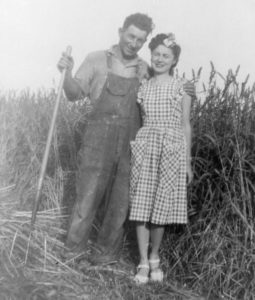
Meyer and his wife Eva Himmelstein on the farm, 1946. Photo: Frank Himmelstein.
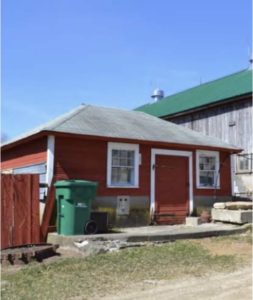
Himmelstein Milk House, built in 1939. Photo: Lucas Karmazinas, State Register of Historic Places, 2013
The Himmelstein Homestead Farm Today
The Himmelstein Homestead Farm is a busy place today! Frank Himmelstein raises many kinds of squash. He sells to food coops, the local middle school, and restaurants. He also grows and sells hay to feed animals in the winter. He went to college to study farming. He is careful not to do anything that would hurt the land. He has arranged for the farm to be a farm forever. He worked with the State of Connecticut. The state’s Farmland Preservation Program makes sure that good farmland will always be used for farming.
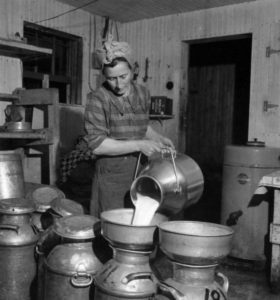
Zelda Himmelstein pouring milk into milk cans to send to the milk cooperative, 1940s. Photo: Frank Himmelstein
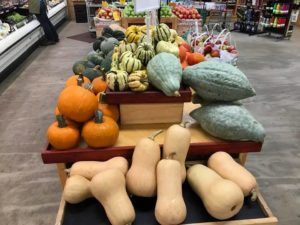
Many kinds of Himmelstein Homestead Farm squash for sale at the Willimantic Food Coop. Photo: Frank Himmelstein, 2018
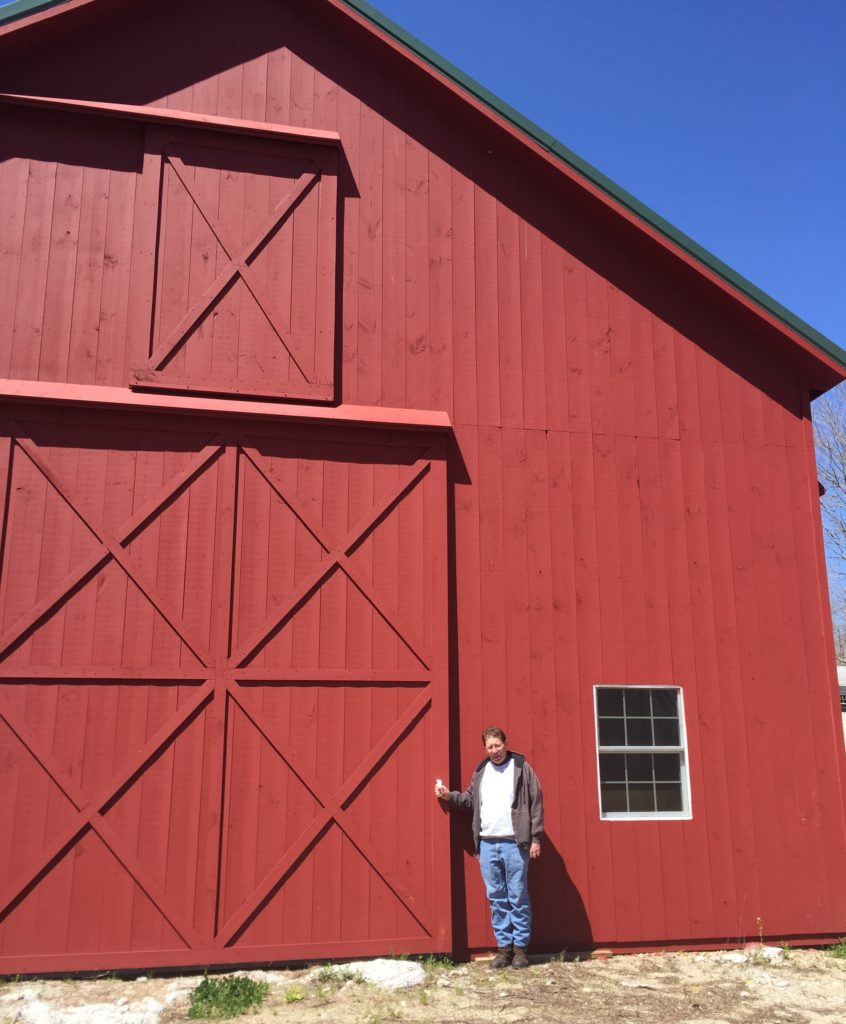
Farmer Frank Himmelstein outside his barn. Photo: Frank Himmelstein, 2016










